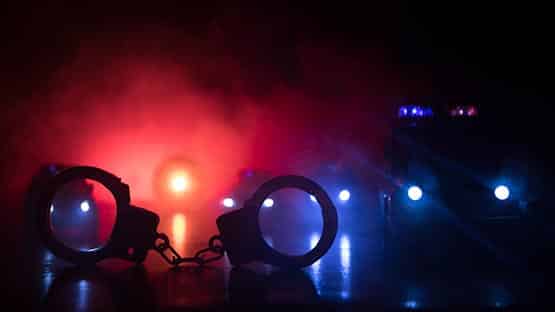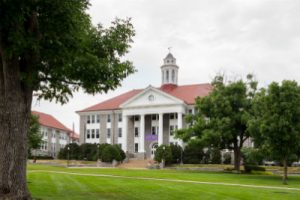
Hosted by: The Hon. John B. Davis, Augusta County Clerk of the Circuit Court; the Augusta County Historical Society, and the Augusta County Genealogical Society
When: Friday May 10, 3 p.m. remarks and demonstration; 4 p.m. reception
Where: Augusta County Courthouse (courtroom), 1 East Johnson St., Staunton, VA
Free and open to the public
They are the records of a wild west, a new frontier, a nation struggling with its social conscience, of war, and of every day people dealing with the every day problems of society such as love, deceit, misfortune and even petty quarrels with neighbors. And for the first time the Augusta County Chancery Records are available to every person in the world with a computer screen – all 878,490 pages from 10,268 lawsuits!
The unveiling of the preservation and digitization of Augusta County’s court records will be celebrated in a special media event held Friday May 10 at 3 p.m. at the Augusta County Courthouse in Staunton, Va. Tagged the “Exploration of the Augusta County Chancery Records: A Local, State, and National Treasure,” and hosted by Augusta County Clerk of the Circuit Court John B. Davis, Augusta County Historical Society President Nancy Sorrells, and Augusta County Genealogical Society President Leslie Hall, the program will feature a presentation by Library of Virginia staff who have labored for years to process this amazing record of American history.
The final images from the Augusta County chancery causes are now available on the Library of Virginia’s Chancery Records Index. Although the Augusta County court cases are not the first in the state to be processed and available on-line, they are by far the most complete and, according to some experts, represent one of the most significant collections of historic legal documents in the nation.
It is both by luck and by a quirk of western settlement that this is so. When Augusta County was formed out of Orange County in 1738, its western boundaries were defined as stretching to the Mississippi River. That meant that all or parts of eight future states and the future city of Pittsburgh were located within the county. Of course since then, first counties and then entire states were carved out until Augusta shrank to its current size by the 19th century. However, by law, records remained in their courthouse of origin so those bundles of papers that record the settlement of America’s first frontier have remained in Staunton. That’s where the luck comes in. Unlike many courthouses across the nation, Augusta’s courthouse was never flooded, burned or caught in the crossfire of battle. And, although Native Americans did once damage the courthouse door, the records have mostly stayed intact. The courthouse was never moved to a different site either. Five courthouses have been erected on the same site and the records have faithfully been transferred to the new building each time.
However, to say the records were there does not mean that they were easily accessible. Each sheet of paper was folded several times into pieces maybe an inch wide and six inches long. Those folded documents were then tied tightly together with string and crammed into hundreds of drawers organized in loose chronological order. Over the centuries the yellowing documents were encased in a layer of coal dust. For historians and genealogists, searching for pieces of the past was like looking for a needle in a dirty haystack.
Augusta County Clerk of Court John Davis was a high school history teacher before being first elected as clerk 30 years ago. He knows the importance of the documents housed in the courthouse he oversees. Through the years he has sought out grants to preserve and microfilm the treasure trove of public records in the courthouse. He and his staff have brought almost a half million dollars in grants into use to preserve deeds, court order books, wills, and marriage records. Until the late 1990s, the largest gap remaining to be preserved was represented by the chancery court records that spanned a time period from 1745 to 1912.The Augusta County chancery causes are the most voluminous of any locality in Virginia and are one of the longest and most complete continuous collections of chancery records of any locality in the country. Cases are also included from the Staunton Superior Court of Chancery, with a jurisdiction of over 28 localities, from 1802 to 1831.
In 1998, using a Virginia Circuit Court Records Preservation (CCRP) grant, Davis and the Library of Virginia staff began the daunting task of preserving those Augusta County court records. Until 2007 archival assistants sat in the dimly-lit courthouse basement tediously unfolding documents, cleaning them, recording any surnames that they saw, and putting the papers into archivally correct folders and boxes. Six years ago the remaining unprocessed chancery records were transferred in stages to the Library of Virginia for processing and indexing. It took years, but finally the last document was unfolded and placed in a box and the electronic index was complete in late 2009. The following year, using a $150,000 grant from the National Archives and Records Administration and additional CCRP funding, the library began digitizing the collection. Since that time, researchers have been anxiously awaiting the final step, which was making the now preserved documents available on-line.
Just a few weeks ago, the task was complete! Anyone with Internet access can go to http://www.virginiamemory.com/collections/chancery/ and learn about American history through the pages of Augusta’s court records. Each of the nearly 900,000 documents can be brought up on the screen or downloaded for future reference. Many of the cases include fascinating bits of evidence such as drawings, maps, and, more recently, photographs.
The trip to the past is a fascinating one. Augusta County Chancery Cause 1818-099, for instance, details a dispute over the estate of John Edmondson that included numerous slaves. The suit contains a chart documenting the hiring out of slaves owned by Edmondson. Another case, Administrator of Andrew Moore vs. Representatives of John Stuart, etc., 1845-015, gives some perspective on the ways in which national events impacted the lives of Virginians. The suit documents the negative effect on property values in western Virginia resulting from the opening up of five million acres of land by the Louisiana Purchase. A third case, in 1855, concerns bounty land for soldiers who served in the French and Indian War a hundred years earlier. During that war, George Washington led a regiment of Virginia soldiers in the Battle of the Great Meadows, also known as the Battle of Fort Necessity. The lawsuit involves the descendants of those soldiers who claim their ancestors never received their land.
Not all the cases have national significance. One 1815 case involves the water rights needed to run a sawmill, distillery, and an oil mill. Another, in 1820, involved a young blacksmith apprentice who was found frequently loitering.
The event on Friday, May 10 is designed to celebrate the preservation and new accessibility of this amazing heritage through the hard work and cooperation of both public entities and private groups dedicated to preserving and documenting Augusta’s history. For those in attendance, Library of Virginia local records specialist Carl Childs and local records archivist Vincent Brooks will offer an interactive journey through the records at 3 p.m. in the courtroom. A reception will follow at 4 p.m. The public is invited to attend.










